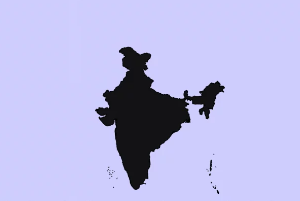Administrative Territorial Entities in India
Administrative territorial entities in India refer to the various geographical divisions and subdivisions that are used for the purpose of governance and administration. These entities are hierarchical in nature and are created by the government to ensure effective management and delivery of public services. India, being a vast and diverse country, has a complex system of administrative divisions that have evolved over time.
Constitutional Framework
The Constitution of India provides the legal framework for the creation and functioning of administrative territorial entities. Article 1 of the Constitution declares India as a “Union of States,” indicating a federal structure. Part VI of the Constitution (Articles 152-237) deals with the provisions related to the states and union territories.
States
States are the primary administrative divisions in India. As of 2021, there are 28 states in the country. Each state has its own elected government, headed by a Chief Minister, and a Legislative Assembly. States have the power to legislate on matters that are included in the State List and Concurrent List of the Seventh Schedule of the Constitution.
Union Territories
Union Territories (UTs) are administrative divisions that are directly governed by the Central Government. Currently, there are 8 UTs in India, including Delhi, the national capital. UTs are administered by a Lieutenant Governor or an Administrator appointed by the President of India. Some UTs, like Delhi and Puducherry, have a Legislative Assembly and a Council of Ministers, while others are directly governed by the Central Government.
Districts
States and UTs are further divided into districts for administrative convenience. Districts are headed by a District Magistrate or Collector, who is responsible for maintaining law and order, revenue collection, and implementation of government schemes. As of 2021, there are 739 districts in India. The number of districts varies from state to state, with Uttar Pradesh having the highest number of districts (75) and Goa having the lowest (2).
Subdivisions of Districts
Districts are further divided into smaller administrative units for better governance and service delivery. These subdivisions include:
- Tehsils or Talukas: These are the basic units of administration in rural areas. Each district is divided into several tehsils or talukas, which are headed by a Tehsildar or Talukdar.
- Blocks: Blocks, also known as Community Development Blocks, are a cluster of villages that form a unit for planning and development purposes. Each block is headed by a Block Development Officer (BDO).
- Villages: Villages are the smallest administrative units in rural areas. Each village has a Gram Panchayat, which is an elected local self-government body responsible for the development of the village.
- Municipal Corporations, Municipalities, and Nagar Panchayats: In urban areas, the administrative divisions are based on the size of the population. Cities with a population of more than 1 million have a Municipal Corporation, while those with a population between 100,000 and 1 million have a Municipality. Towns with a population of less than 100,000 have a Nagar Panchayat.
Sixth Schedule Areas
The Sixth Schedule of the Constitution provides for the administration of tribal areas in the states of Assam, Meghalaya, Tripura, and Mizoram. These areas have autonomous district councils and regional councils that have the power to legislate on certain matters, such as land, forest, and agriculture. The aim is to protect the tribal population and their culture.
Panchayati Raj System
The 73rd Amendment Act of 1992 introduced the Panchayati Raj system, which is a three-tier system of local self-government in rural areas. The three tiers are:
- Gram Panchayat at the village level
- Block Panchayat or Panchayat Samiti at the block level
- Zila Parishad at the district level
The Panchayati Raj institutions have the power to prepare and implement plans for economic development and social justice in their respective areas.
Autonomous Regions
Some states in India have autonomous regions that have been created to address the demands for self-governance by certain ethnic or linguistic groups. Examples include the Bodoland Territorial Council in Assam and the Gorkhaland Territorial Administration in West Bengal. These autonomous regions have certain powers related to agriculture, education, and culture.


